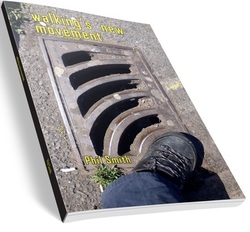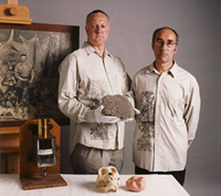Savilian Space
In the recent revelations about the abuse of vulnerable people, mostly young and mostly female, by celebrities, politicians and organised gangs in the UK, accounts of this abuse often describe a particular kind of space of abuse; a space that seems to have gone missing, become invisible or meaningless, that seems to have been largely unacknowledged in public, legal or academic discourses but to have been consistently exploited semi-publicly/semi-privately by abusers, both individual and organised, active in different class and cultural milieus. In the case of the abuses of young women in Rotherham and other English cities, this Savilian space of abuse lies in a particular relation to family, ‘community’ and small businesses, in the same way as it has, in other instances, lain in a similar relation to the entertainment industry, churches, local and national state bureaucracies, hospitals, psychiatric wards and special schools. These Savilian places of abuse are often located somewhere between private and public space. They are places to which access is negotiated; though not public places they are usually ‘known’ to, even administered by, the institutions, families and communities the abusers operate within. These are not places of confinement or concealment, nor are they clandestine or taboo, covert or transgressive. They are inversions or inlets of semi-informal and semi-official space: dressing rooms, offices, private rooms on wards, curtained beds, and so on. The behaviour of the perpetrators using such spaces is often described by witnesses as “reckless”. But it is not unwitting. The late Sir Jimmy Savile would manipulate corpses into tableaus to which he was sole spectator and redeploy glass eyes as ‘gemstones’ for his finger rings. He did not hide his behaviour in a conventional sense, but performed an eccentric, sexualised presence, posing in skimpy clothes, leering through TV shows. Savile embodied the spectacle, but he also spectacularised embodiment: the body of no one – child, patient, elderly person or corpse – was safe from him. So close at hand to an official world are Savilian spaces that these acts of apparent recklessness are in fact very effective in creating a symbiotic relationship between criminal and official spaces. Semi-hidden abuses in semi-hidden space put the official world in a position of ‘semi-knowing’; hearing tales whispered behind the hand, gossip about ‘bad reputations’, and so on. By non-action and by witting, unwitting and half-witted collusion with abuse in a semi-public zone, powerful official bodies (hospitals, the BBC, churches, social services), consistent with what Slavoj Žižek describes as the ideology of all institutions (“pretend to deny your self-interest and you can have it all”), have legitimated outrages committed against some of the most vulnerable people in society. ... Savilian space is a semi-privatised space within a public context, where abusive agents act with the accommodation, tolerance, connivance and embarrassment of public power and authoritative communal relations. These are places close to which authorities display their symbols, put up their signs, but then withdraw their responsibility and their empathy. A parade of authority and ‘normal procedures’ is followed by their effective self-negation, delivering a space where abusers are able to enact power and authority over victims in an apparently or semi-officially-validated, but evacuated, space. These are neither transgressive spaces nor ‘temporary autonomous zones’ but spaces validated by layers of a broader communal culture, ranging from a fearful not-wanting-to-know to an enthusiastic cheerleading, where Leeds football fans can chant in praise of Sir Jimmy Savile’s rapes or where young women can be openly treated (and marked) by their communities as chattels unfit for agency in public space (with the embarrassed or pragmatic connivance of liberal authority). They are stages where the authorisation by, and then withdrawal or semi-withdrawal of, the state (or its surrogate authorities such as families or ‘communities’) empowers non-official individuals or groups to enact naked ideology and unapologetic power. Part of the immunity of celebrity and political abusers was conjured by their performance of authenticity. Sir Cyril Smith, Sir Jimmy Savile and others were players in the sustaining of everyday Reality; they were bizarre and phantasmagoric expressions of Ordinariness. Often with uneasy relationships to their working class backgrounds, the likes of Savile and Smith were best able to represent Ordinariness (and the freedom of opportunity to transcend it) by not quite ever being part of it. They were valuable ideological players in a fantasy about liberality and equality (behind which they, like other less-obviously rapacious manipulators, liberally took advantage of those less equal than themselves); further proof that without an understanding of the Spectacle one can mistake spaces of exploitation for those of liberation. References: This entry is taken verbatim from: Phil Smith's book Walking's New Movement |
Explore |



